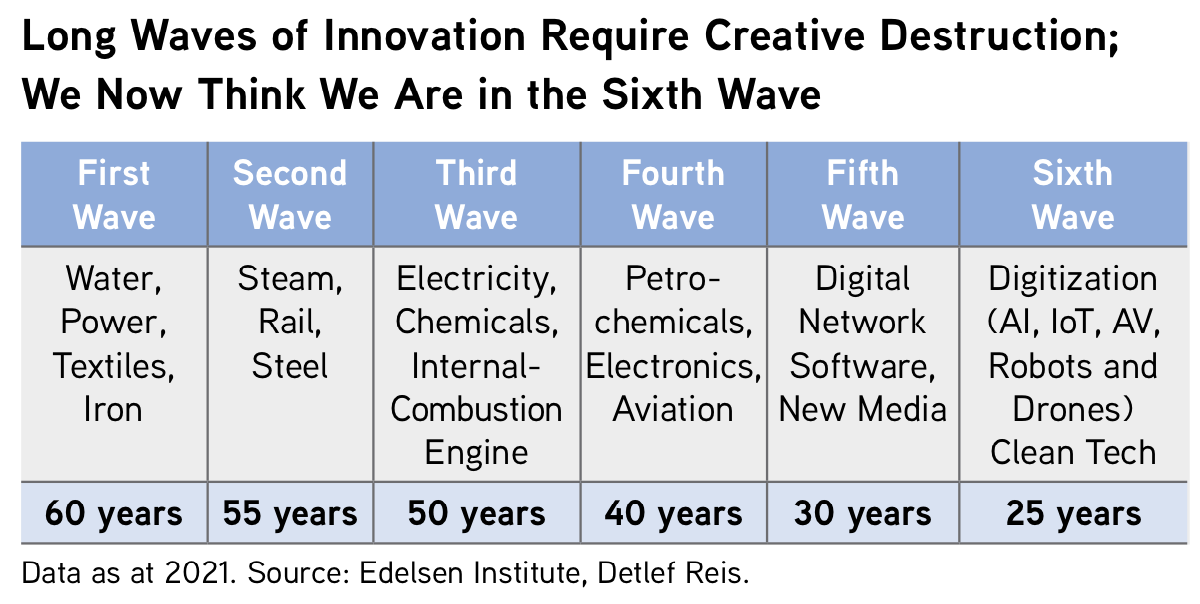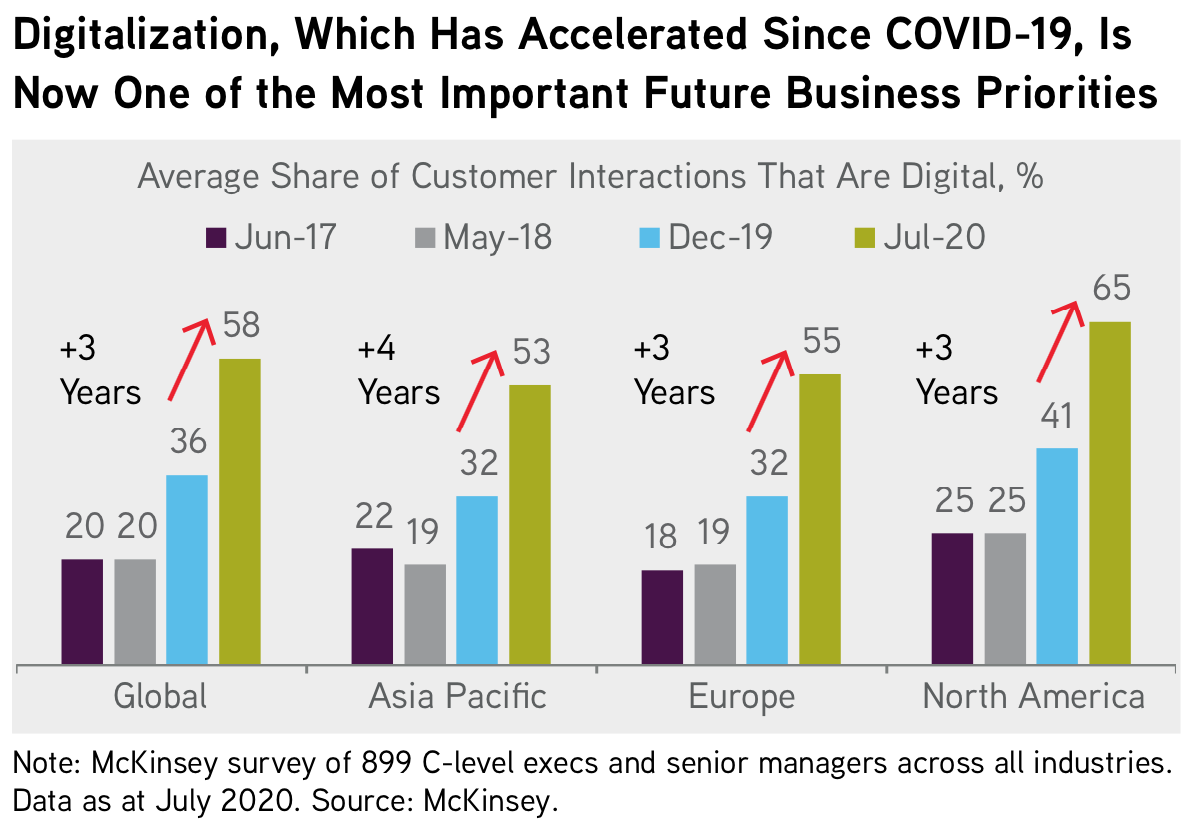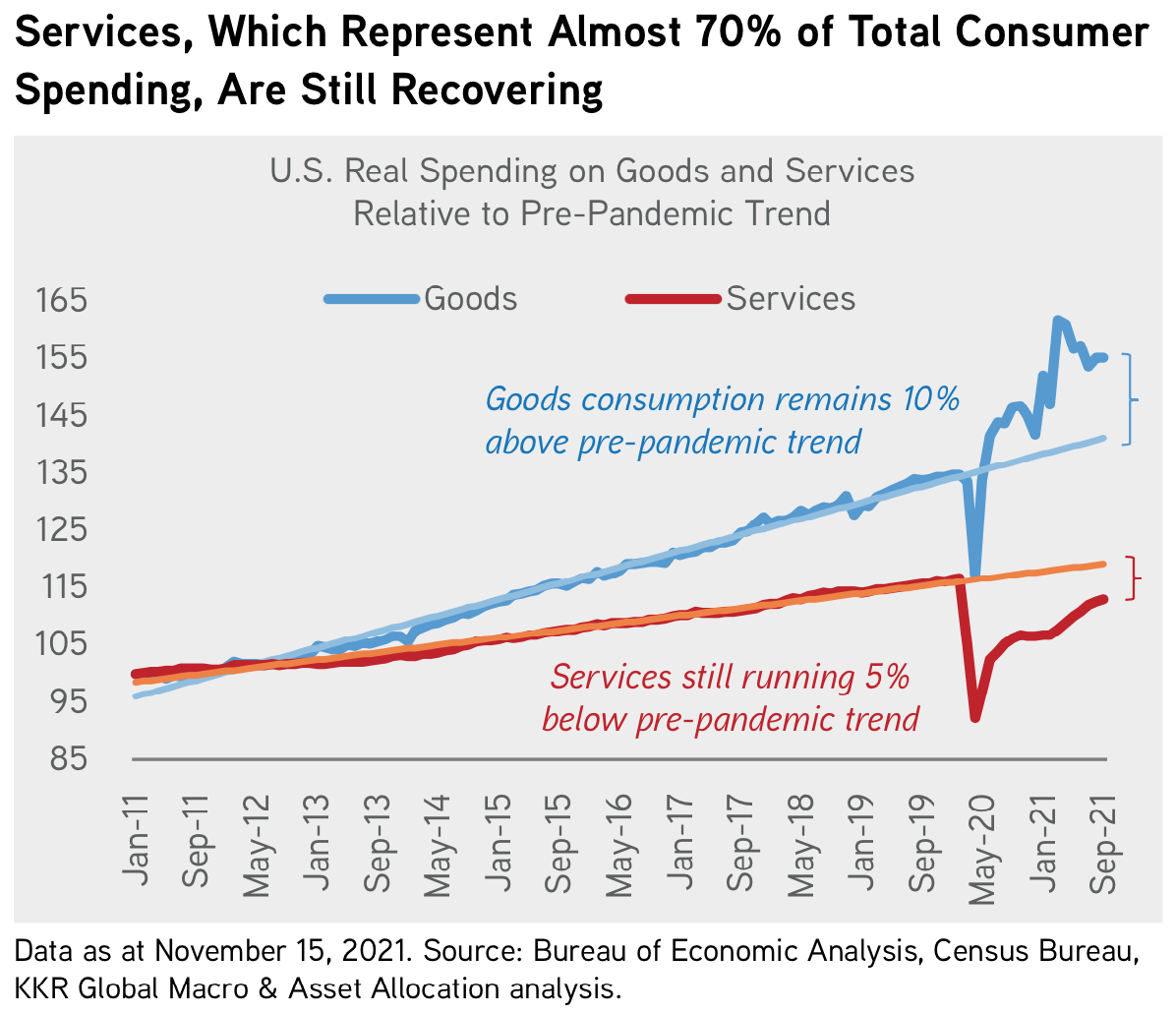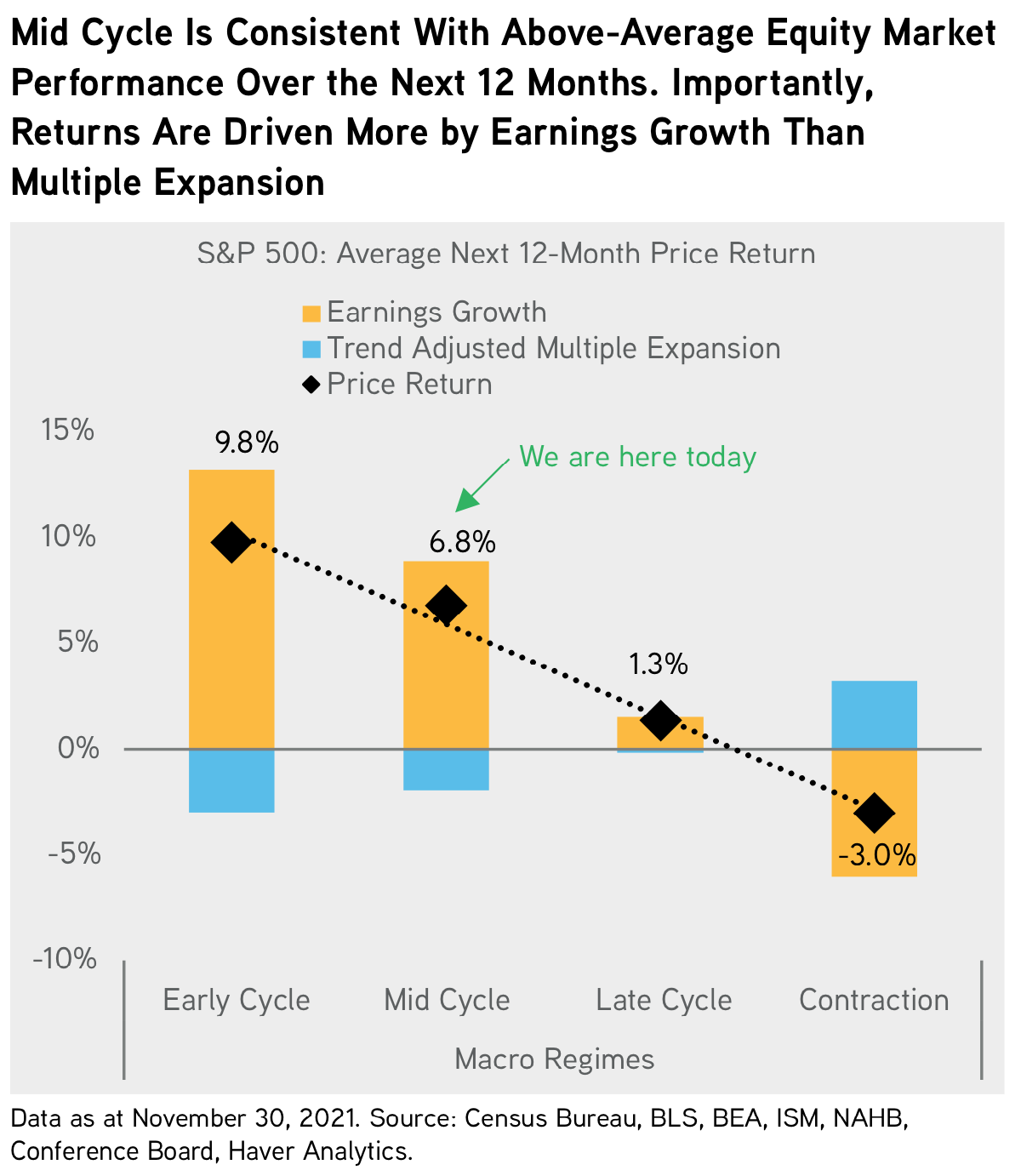Higher interest rates can’t kill this recovery, KKR says
We'll soon see proof of the adage that history doesn't repeat itself but it does rhyme, according to KKR's outlook analysis for 2022.
The report, assembled by the group's research arm, the KKR Global Institute, draws on macroeconomics and thematic analysis to identify the asset classes and investment strategies most likely to succeed in the year ahead.
As the report title drives home, this really is A Different Kind of Recovery.
"The ongoing uncertainty linked to COVID-19 has meant looser fiscal and monetary policies for longer relative to history," KKR says.
"Moreover, the global energy transition, coupled with excess consumer savings, is impacting the economic recovery in ways that are dramatically different than recent recoveries."
This wire takes a highlighter to KKR's 60 page outlook report to gauge how its experts see the year unfolding.
The whole document is well worth a look — there's a link below — but here we'll just give the flavour of the analysis plus some actionable insights.
Read on for five themes in the current recovery, six top-down themes to watch, KKR's Picks and Pans, and six tips for portfolio positioning.
KKR does its homework
As a leading global investment firm, KKR has earnt the right to be heard. At the end of September 2021, the group had US$459 billion in assets under management in multiple alternative classes, including private equity, credit and real assets.
But KKR does not just manage for other people — it has skin in the game. It has invested US$30 billion of its own capital alongside clients in the group's funds and portfolio of companies.
Reports from the KKR Global Institute are developed with input from the group's teams in 21 cities across four continents, including Australia.
The capital and entrepreneurial disciplines instilled in the group via its KKR Capstone division ensure the research stays relevant in the real world.
The big picture
"Our base view is that, after almost four decades, disinflation is giving way to reflation," KKR says. The money sloshing through the system and widespread supply chain and labour shortages are key drivers.
However, that reflation won't stall the post-COVID recovery. Real interest rates remain very low outside China, and economies continue to feel the effects of trillions of dollars of global monetary support. Volatility can be expected nonetheless, as central banks back away from quantitative easing.
"Overall, our posture at KKR is that the current environment remains generally constructive for risk assets," KKR says.
COVID rhymes with GFC
"If we had to say the current period ‘rhymed’ with a past period, it would be the 2001–2007 economic recovery," KKR says.
"During those years, China’s fixed investment build-out created inflationary pressures and a strong capex cycle; this time, by comparison, it is both record levels of stimulus and the global energy transition that are acting as important catalysts for upward pressure on input costs."
KKR sees these five themes in the current recovery and insists that while volatility can be expected, panic is unwarranted:
- The West is driving this recovery, whereas the East pulled us out of the GFC.
- Both monetary and fiscal stimulus is at work.
- Input costs will not fall any time soon, driven by higher wages and supply chain reconfiguration.
- Any slowdown in growth is likely to be caused by supply issues, not demand. Hiccups due to COVID and decarbonisation could exacerbate this.
- Outside China, real rates will lag this cycle.
Don't let the bumps surprise you
"The road ahead will indeed be a bumpy one," KKR says. "As such, it favours thematic investors who can incorporate a top-down approach and who are willing to lean into uncertainty/dislocation."
KKR believes in these six top-down themes:
- Remain long pricing power
- Own more collateral-based cash flows
- Digitalisation/decentralisation
- Normalisation: revenge of services
- The energy transition: a mega theme
- We're in a savings bull market.
Let's look at each of these themes in more detail.

1. Remain long pricing power
KKR says favouring price makers is the best protection against rising input costs. Supply chain pressures are not easing as much or as quickly as the bulls might like, and labour shortages have become a big issue.
In this environment, the ability to pass on higher input costs instead of absorbing them becomes a huge competitive advantage.
"Against this backdrop, we look for a major valuation differential to emerge between price makers and price takers," KKR says.

2. Own more collateral-based cash flows
KKR expects accelerating demand for collateral-based cash flows such as infrastructure, real estate and asset-based finance, due to rising cyclical inflation, increased economic stimulus and higher commodity prices.


3. Digitalisation/decentralisation
KKR is confident we are in the middle of an innovation boom and the pace of disruption can be expected to accelerate.
Sleepy incumbents can be expected to suffer, especially in financial services.
"Specifically, we think that blockchain technologies could lead to a shift from centralisation to decentralisation across many established sectors, including music and healthcare royalties, as well as loans, custody, and insurance," KKR says.
"This shift is a big deal, and we think it warrants investors’ attention."

4. Normalisation: revenge of services
KKR notes that US spending on goods is up and spending on services is down.
Although new COVID variants can be expected to emerge, consumers can be expected to to spend more on experiences in the next 24 to 36 months as society adapts to living with the virus.


5. The energy transition: a mega theme
"Environmental considerations represent a major investment opportunity, particularly amidst growing concerns about supply chain resiliency," KKR says.
KKR sees opportunities in almost all aspects of ESG and suspects the resilience and sustainability of supply chains could full a super cycle of capital expenditure.
The ESG performance of many old-economy sectors, such as commodity producers and manufacturers, could also be improved.
KKR foresees companies with lower carbon footprints will become preferred borrowers.

6. We're in a savings bull market
The hungry money that has been looking for a risk-free return in an era of minimal interest rates won't be disappearing any time soon. All the while that pool has just been getting bigger, with help from the growing middle class in Asia.
KKR expects low interest rates to remain for some time.
"This backdrop favours scale players that can leverage technology, sourcing, and portfolio construction to deliver better investment management results," KKR says.
And the financial industry overall can expect more and more business. "We are on the cusp of a major intergenerational wealth transfer, one that could dwarf what the financial planning community has enjoyed so far," KKR says.
Unleash your inner entrepreneur
"Across all these ideas, we believe that — when possible - now is the time to buy complexity and sell simplicity," KKR says.
"Consistent with this view, portfolio managers will need to be more thematic about where an industry is headed.
"We are advocating getting behind situations where active corporate management can unlock value that the public markets may be missing."
Picks and Pans
"Our thematic work increasingly drives our thinking around deployment, monetisation and asset allocation," KKR says.
The group's Picks and Pans highlight the expected beneficiaries in the current environment — and what to avoid.
Picks
-
KKR backs global equities over sovereign debt. Within equities, a balance of growth and value is favoured. The group doesn't like large mega-cap tech and wants to see profitability. Speculative stocks with no visible prospect of real earnings can be expected to suffer as interest rates rise. Strong performance is expected from the US but Europe and a few emerging markets will be the stars.
-
Pricing power and collateral-based cash flows are king. KKR likes infrastructure, real estate, and asset-based finance, including housing.
-
We're in a global innovation cycle. KKR likes innovation, especially in private markets. Wise capital allocation to today's mega themes will be rewarded. "Many of the most promising companies are actually still private," KKR says. "We suggest allocating some slug of capital to leaders in Blockchain, life sciences, payments, and software spaces."
-
Contrarian thinking could pay. "In a world awash in liquidity, spend some time going where others are not," KKR says. Look at energy, European banks, Chinese technology companies, beaten-down conglomerates, and China high-yield debt in US dollars.
-
There are opportunities in credit. "Within liquid credit, we still prefer bank loans to high yield; overall, though, we favor opportunistic credit, which gives us the ability to toggle across multiple asset asset classes as opportunities arise," KKR says.
-
Own select commodities. Oil looks favourable in certain conditions, and commodities linked to the energy transition are worth considering, including aluminum, copper, and lithium. Derivatives such as carbon credits are worth a look. "We are bullish too on the picks and shovels associated with the global energy transition," KKR says.
- Partnering with innovators makes sense. "Providing unique capital solutions to private companies in innovation sectors makes a lot of sense to us," KKR says. "Many, though not all, of these early stage companies are already cash generative. Media, biotech, gaming, and Blockchain all potentially could be beneficiaries."


Pans
-
Price takers are likely to suffer. Earnings and valuation multiples are likely to slip for highly geared companies that cannot pass on costs, including labour.
-
Long-duration bonds are likely to disappoint. "The consensus is that the long end of the curve will be essentially flat 10 years from now on a forward basis," KKR says. "We think that this forecast for the long end is too pessimistic."
-
Big-cap technology stocks face setbacks. Popular growth stocks, including unprofitable ones, are likely to suffer. Possible headwinds include the law of large numbers, increased regulatory scrutiny, higher multiples and tighter financial conditions.
-
Turkey and Mexico are on the wrong track. Capital should steer clear of Turkey. "The country’s policies are out of step with the global reflation theme we see unfolding," KKR says. "On Mexico, we are increasingly unsettled by recent administration moves, including its relationship with the central bank. "


We're still in recovery mode
Macroeconomic indicators tell KKR we are in the middle of the economic cycle, but the group notes this one has been faster and stronger than before.
"After growing 10.2% in 2021, we expect nominal GDP growth could reach nearly 9% again in 2022," KKR says.
Compare that with the years after the GFC: nominal GDP averaged just 7.1% from 2011 to 2016.

An implication for equity markets is that mid-cycle returns are typically driven by earnings growth, rather than expansion in multiples.
Another is that dividend returns should be healthy enough for stocks to remain competitive with bonds.
KKR expects continued strong earnings growth in 2022 but more conservative returns from earnings and multiples in 2023.
What to do next
"While financial conditions will begin to tighten in 2022, we are starting from an extraordinarily low base when it comes to real rates and an extremely high base when it comes to overall liquidity in the system," KKR says.
The group makes six recommendations for positioning portfolios for the coming year:
- Overweight positions are recommended for real estate equity, credit and core, plus global infrastructure.
- Overweight positions are recommended for public equities and private equity. Outperformance is expected in Europe and select emerging markets, plus energy, industrials and financials.
- The mega theme of the global energy transition warrants attention. The old economy should not be overlooked. New entrants, especially in technology and infrastructure, are favoured. Consumers can be expected to prefer greener suppliers in future.
- Long-duration fixed income is unattractive.
- Choppier markets can be expected in 2022. Opportunistic credit and crossover debt/equity funds could be a way to respond to dislocations.
- Exposure to non-correlated assets, such as royalties, Blockchain technologies and music rights, could be worthwhile.
Read the full report
To view the full KKR Global Initiative publication, A Different Kind of Recovery, click here. To learn more about LIT available to wholesale and retail investors in Australia & New Zealand (ASX:KKC) please visit the KKR Australia website.
5 topics

